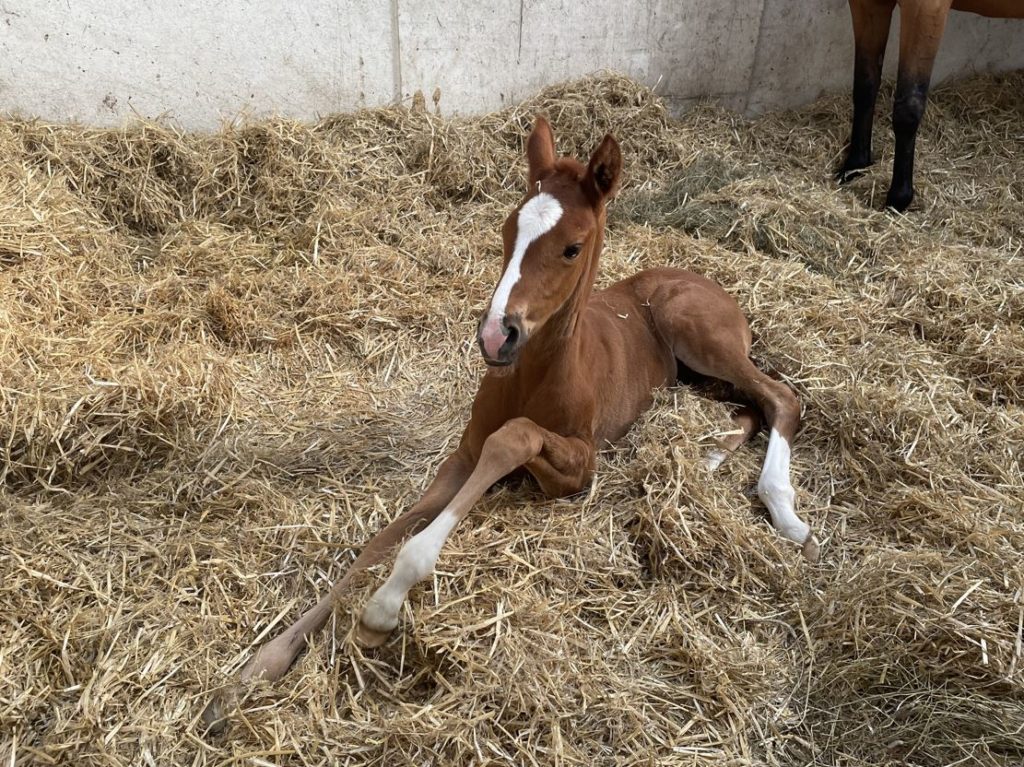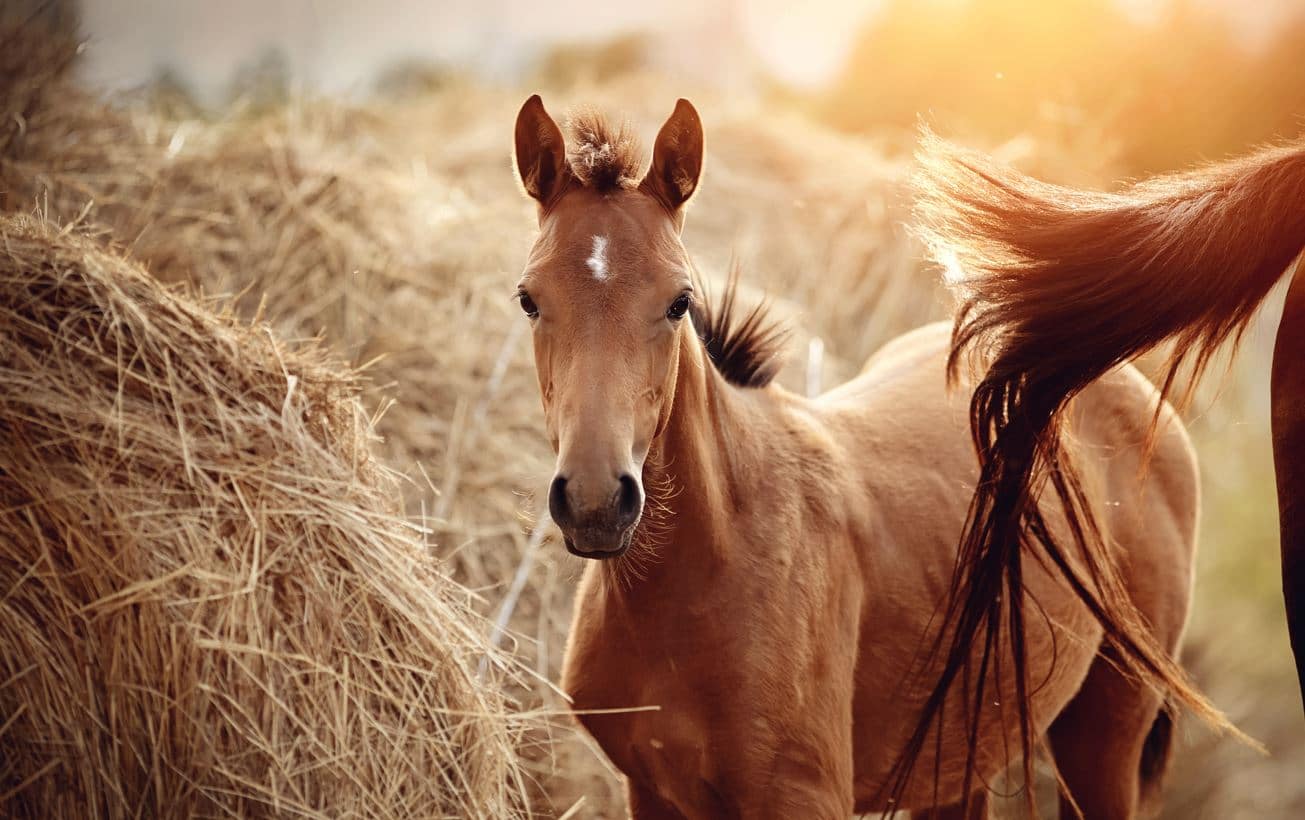In order to determine more precisely the date on which the mare will give birth, it is necessary to remain vigilant on the signs which could alert on the imminent birth or not of the mare.
What is the average gestation period of mares?
THE GESTATION PERIOD OF MARES IS 338 DAYS OR ABOUT 11 MONTHS ON AVERAGE.
However, variations are possible, between 310 and 365 days and sometimes 300 days for the first foal.
There is evidence that males are more likely to overrun than females (3 to 4 days on average). We also know that it is more likely to exceed the term for a whelping in the beginning of the year than in the spring.
There is no 100% reliable method to determine the exact date of parturition.
However, various systems are available, such as video, straps and alarms, which can provide some reassurance in terms of monitoring.
Primiparous (1st foal) should be monitored from day 300.
How to prepare the foaling of my mare ?
Prepare a large straw box, called a boat box (lots of straw, and more and more on the sides to protect from the walls), to help the mare feel as comfortable as possible. The ideal situation is to stabilize her every night after 10 months of gestation, so that the colostrum (first milk) has a maximum amount of specific antibodies against potential infections in the foal’s environment, in order to properly protect the foal’s immune system.
Tail dressing is recommended and the veterinary surgeon will perform a perineal episiotomy (cut along the vulva) if the mare has already had stitches.

If the vulva is not cut, it will be dangerous for the foal, with a high risk of mortality, because the foal can choke if the water pouch has not completely broken if the birth canal is too narrow.
What are the important signs before the mare gives birth?
A “drop” in the hindquarters, larger teats, and the production of “wax” on the teat tips are signs that the mare is about to give birth. The appearance of wax does not necessarily mean that birth is imminent, as mares can give birth without increasing teat size and without necessarily waxing.
The mare’s vulva will relax and the mare will try to find a quiet place in the paddock.
In the hours before foaling, the mare will show signs of sweating around the elbow behind the thighs and on the torso.
A messy stall litter is another sign of impending foaling, as mares become restless and constantly move around the stall.
Some mares may appear anxious before foaling.
What is the best time for the mare to give birth?
Delivery (expulsion of the pouch) should take place within six hours of delivery.
It is essential that you contact your veterinarian if the delivery has not progressed normally, as well as for any possible problems such as a twisted uterus or hemorrhage and the onset of labor.
As a general rule, in 70 to 80% of cases, foaling takes place at night.
The entire process should take an average of 15 minutes, but can vary from 5 to 45 minutes.
The foaling process should take place in three stages: presentation, expulsion and delivery.
Do not hesitate to contact your veterinarian if the foaling does not go as planned



